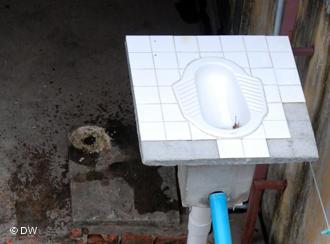When is a toilet not a toilet – when it is ‘aspirational’
Toilets we are told must become an aspirational object. People must be taught to aspire to owning a toilet because by adding the toilet to their increasing array of possessions they will be able to declare to the friends and peers that they are successful.
HH remains focussed on the old fashioned idea that removing waste safely is essential to improve health.
Perhaps those wanting to lecture some of the poorest people on earth on aspiration and success can be polite enough to wait until good quality toilets – real toilets not aspirational ones – are built and families can remove their waste safely.

Read on for an example of how the front part of the story goes …..no talk of the performance of the toilets in the mid or long term let alone how the waste collected in the toilets is safely treated. That’s not so easy and may not return the desired profit to the entrepreneur.
A simple calculation
The clever bit – and where the “marketing” term comes in – was to train local cement manufacturers in six districts to make the new toilet, dubbed the Easy Latrine, and get them to take the entire toilet set by truck to villages.
Previously, villagers interested in building a toilet would need to go to the nearest town with a list of supplies, bring them back and get a mason to install it.
It was complicated and expensive – costing up to $200 each time. Many people simply didn’t bother. Jacks explains how the new method works: “Latrine producers will load up their trucks with these latrines, go into villages, market and educate about proper sanitation and hygiene, and will sell latrines door to door or at village meetings.”
The Easy Latrine was launched in December and has sold almost 6,000 units. Jacks says the key to marketing is letting people know how much poor hygiene and sanitation cost them each year in medicines and lost work days. A World Bank report from 2008 calculated that cost at $150 per family.
The Easy Latrine costs just $35, making that a relatively easy sell. The entrepreneur pockets a profit of between $5-10 per latrine, and the family enjoys better health.









